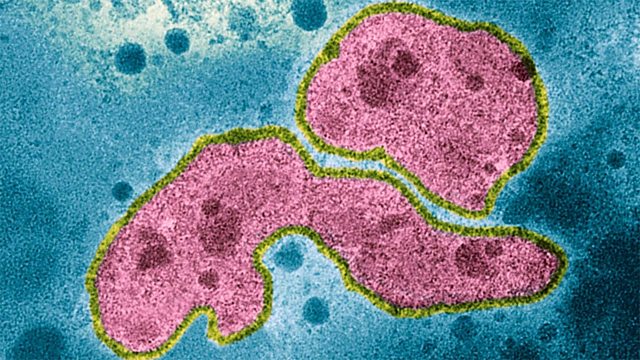Flu
Two suppressed reports showing how bird flu could be made more infectious have now been released. Kevin Fong asks what lessons for public health can be learned from GM viruses.
Two teams of virologists found themselves at the heart of bioterrorism maelstrom late last year when their studies on mutant bird flu were suppressed by US authorities.
While security experts feared the reports were recipes for bioweapons of mass destruction, the researchers argued they held important lessons for the threat of natural flu pandemics developing in the wild.
Now the authorities have backed down and the reports have been released. Kevin Fong hears how tiny variations in the genes of bird flu can completely change the behaviour of the pathogens and he asks whether deliberate genetic manipulation in the lab can replicate the natural genetic variations occurring in farms around the world.
In 2009, the new strain of H1N1 flu emerged from a few villages in Mexico to infect the world in weeks. What experts fear is that a simple genetic change to H5N1 bird flu could allow it to spread as fast, but with far deadlier consequences. They argue that by identifying dangerous variants in the lab first, we'd be better prepared with vaccines ahead of the danger.
Producer Roland Pease.
(Image: A coloured transmission electron micrograph of the H5N1 virus, better known as bird flu. Credit: Science Photo Library)
Last on
More episodes
Previous
Broadcasts
- Mon 11 Jun 2012 18:32GMT成人快手 World Service Online
- Tue 12 Jun 2012 03:32GMT成人快手 World Service Online
- Tue 12 Jun 2012 10:32GMT成人快手 World Service Online
- Sun 17 Jun 2012 09:32GMT成人快手 World Service Online
- Sun 17 Jun 2012 23:32GMT成人快手 World Service Online
Space
The eclipses, spacecraft and astronauts changing our view of the Universe
The Curious Cases of Rutherford and Fry
Podcast
-
![]()
Discovery
Explorations in the world of science.



